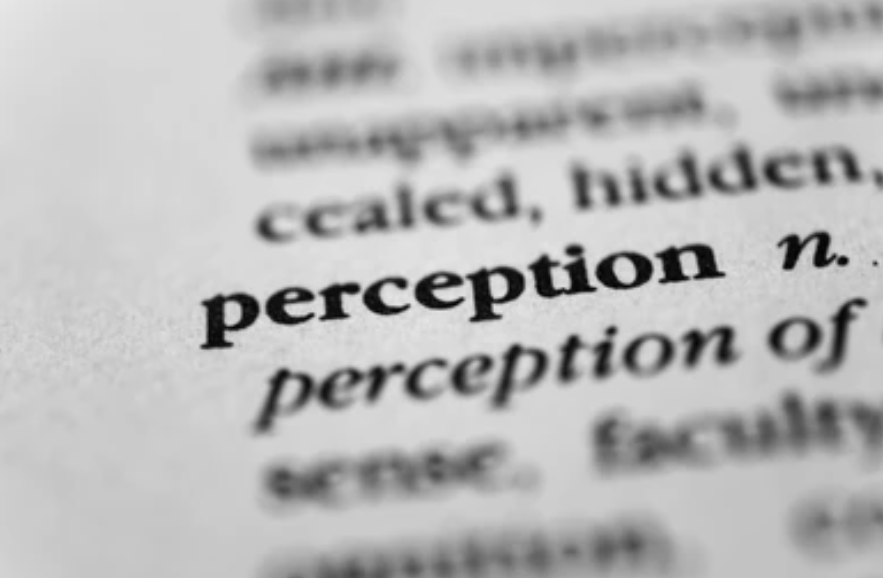
Good morning, Guten Morgen, Buenos Dias, صباح الخير, Suprabhat, Boker Tov,
Did you know that our perception of e.g., time, colour, and emotions is influences by the words (language) we use? The article is split in two parts: First, we cover intercultural differences before moving to “Words at Work” and the impacts of language on workplace culture.
Let’s dive in!
How Does Language Influence Perception?
1. Intercultural Differences
“Learning another language is not only learning different words for the same things but learning another way to think about things.” – Flora Lewis
There are around 7,000 different languages in the world, each with their own structures, sounds and vocabulary. We use language to transfer ideas across minds and pass on knowledge from generation to generation. Culture is deeply embedded in the way we speak, label things, describe concepts and processes. Geoffrey Williams even argues that “you cannot understand one language until you understand at least two“.
Let’s look at some examples: Spanish and German both use grammatical gender (masculine and feminine). ‘The bridge’ is masculine in Spanish (el puente) and feminine in German (die Brücke). When participants were shown the same image of a bridge and asked to describe it, German speakers described the bridge with typically feminine adjectives like ‘beautiful’ and ‘elegant’, whereas Spanish speakers used stereotypically masculine adjective e.g., ‘strong’. In this case, our perception is influenced through language because the grammatical gender determines which adjectives we associate with the object in question.
Researchers also found differences in colour perception. For example, in Russian there are different words for light blue ‘goluboy’ and dark blue ‘siniy’, whereas in English both colours are described as ‘blue’. Participants were shown photos with different shades of blue; the brains of Russian speakers lit up when the blue in one photo fell into another category than the previous image, whereas the brain of English speakers did not react to the change. All participants were able to see a difference in blue (i.e., had healthy eyesight). However, the meaning attached to the stimuli was different. By organising the world in different ways, we interpret information differently based on our culture and language.
Another powerful example for the influence of language is how we blame and punish. If a man accidentally breaks a vase, it is described as ‘he broke the vase’ in some languages, whereas in others the scenario is described as ‘the vase broke’. Someone who newly learns English might not understand why we say ‘she broke her arm’ if it wasn’t on purpose.
Also, a few years back I had a conversation with a man from Africa who came to the UK as a teenager and said he never felt bored until he learned English. In his mother tongue the term ‘being bored’ does not exist, hence he was not aware of the concept and did not consciously experience the feeling (which makes me wish I never learned the word ‘anxiety’ ha). (Okay but jokes aside, unfortunately, this is not how it works with core emotions i.e., fear, anger, happiness, sadness.)
A great deal of research has been done demonstrating how perception of e.g., time, colour, or emotions can differ based on language. To conclude, words are a powerful way of constructing reality and culture is deeply embedded in the way we express ourselves and describe the world.
If you would like to support my work, here’s a way: Ko-fi.com/neurosciencemusings
If you choose to do so: Thank you!!
Now, how can we use this knowledge to navigate life in the workplace?
2. Words at Work
The Power And Influence Of LanguageOn Workplace Culture
The way we speak to each other contributes to developing a workplace culture where everyone feels valued, respected and part of the team (included), rather than under-valued, disrespected and out of place (excluded).
The Diversity Council of Australia researched how organisations can effectively build inclusion through the power of language and published the guide ‘Words at Work’.
What is inclusive language? In essence, it addresses everyone and makes everyone feel seen and valued. Research has shown repeatedly that inclusive cultures are high performance cultures. When a diverse group of people is seen, and valued people tend to feel safe and motivated to put themselves out there and ultimately thrive. This, in turn, drives organisational performance. How we speak to and about each other influences how we treat each other, and ultimately builds our workplace culture.
Inclusive language is effective language – it is respectful, accurate and relevant:
- Respectful: knowing about and showing respect for all members of the workplace
- Accurate: expressing a more accurate view of the real world by reflecting social diversity rather than perpetuating stereotypes
- Relevant: it is meaningful to a wide audience and enables everyone to feel that they are being reflected in what is being said. To feel included, we need to see and hear ourselves reflected in the language used at work.
Examples of exclusive vs inclusive language:
| Instead of … | Try this … |
| ‘Hey guys’ | ‘Hey team’ |
| ‘He’s disabled’ | ‘He has a disability’ |
| ‘That girl is here for your 9am meeting’ | ‘There is a visitor here for your 9am meeting’ |
If you would like to read the full guide ‘Words at Work’, please see here: https://www.dca.org.au/sites/default/files/dca_wordsatwork_overall_guide.pdf
An Anecdote…
Cultural differences not only determine how we describe things but also how we interpret what is being said. A little anecdote from when I started to work in the UK: In Germany, it is very common to tell someone what to do straight up! However, in (very polite) UK, I wondered many times whether something was a genuine question or a task handover. The below is what served me as guidance. 🙂
| English expression: | German equivalent: |
| We should think about doing xyz.
Would you like to do xzy? Why don’t you do xyz? |
Do xzy. |
Do any of the cultural differences resonate with anyone who learned English later in life? I am curious to hear! As always, you can find me in instagram @neuroscience.musings or message me via the contact form on here.
Closings Thoughts
Taking the language/perception discussion one step further: Now that we know how impactful language is in creating our world view, does that mean we can use language to actively construct what we want to perceive? Yes, to a certain extent we can! It’s called ‘reframing’ or ‘cognitive restructuring’. To flag, this article is one of my earlier works (originally published 2+ years ago) and I have written more on this topic since, for example, how can we influence our perception?
Thanks for reading and enjoy your day!!
Best regards,
Sarah
References:
- Winawer, J., Witthoft, N., Frank, M., Wu, L., Wade, A., and Boroditsky, L. (2007). “Russian blues reveal effects of language on color discrimination.” Proceedings of the National Academy of Sciences doi:10.1073/pnas.0701644104
- Guillaume Thierry, Panos Athanasopoulos, Alison Wiggett, Benjamin Dering and Jan-Rouke Kuipers (2009). “Unconscious effects of language-specific terminology on preattentive color perception.” PNAS March 17, 2009. 106 (11) 4567-4570.
- Nielsen, J. A., Zielinski, B. A., Ferguson, M. A., Lainhart, J. E., & Anderson, J. S. (2013). An evaluation of the left-brain vs. right-brain hypothesis with resting state functional connectivity magnetic resonance imaging. PloS one, 8(8), e71275.
- Fausey, C., Long, B., Inamori, A., & Boroditsky, L. (2010). “Constructing agency: the role of language. Frontiers in Psychology.” doi: 10.3389/fpsyg.2010.00162
- Herculano-Houzel S. (2009). The human brain in numbers: a linearly scaled-up primate brain. Frontiers in human neuroscience, 3, 31. https://doi.org/10.3389/neuro.09.031.2009
- April, J., Mayden, R. L., Hanner, R. H., & Bernatchez, L. (2011). Genetic calibration of species diversity among North America’s freshwater fishes. Proceedings of the National Academy of Sciences, 108(26), 10602-10607.
- Clapp, W. C., Rubens, M. T., Sabharwal, J., & Gazzaley, A. (2011). Deficit in switching between functional brain networks underlies the impact of multitasking on working memory in older adults. Proceedings of the National Academy of Sciences, 108(17), 7212-7217.
- Rosen, C. (2008). The Myth of Multitasking. The New Atlantis, 20, 105–110. http://www.jstor.org/stable/43152412
- https://www.dca.org.au/sites/default/files/dca_wordsatwork_overall_guide.pdf
- https://www.ted.com/talks/lera_boroditsky_how_language_shapes_the_way_we_think
- https://www.frontiersin.org/articles/10.3389/fpsyg.2012.00078/full
- https://programmedblog.com.au/workplace-inclusion-through-language/
- https://www.gofluent.com/blog/how-language-affects-the-way-we-think/


